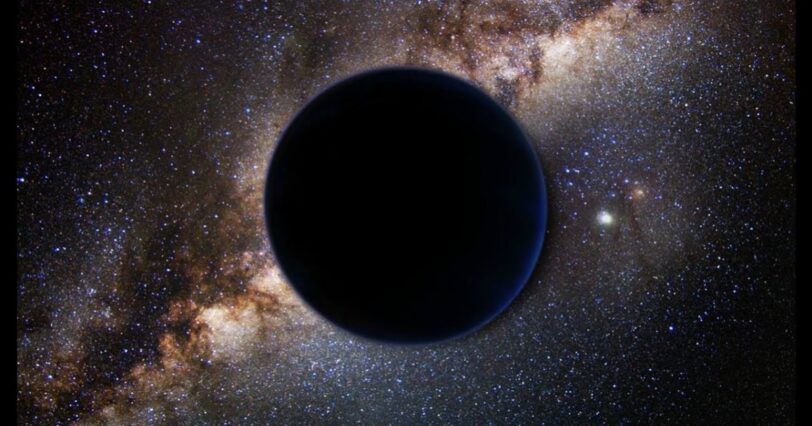We may not have found many planetary systems like our own Solar System. Still, one thing they appear to have in common is that they appear to be made of regular ol’ baryonic matter – you know, the stuff our solar system is made of. This raises the question of whether there could be planets made of other types of particles, such as dark matter.
According to a group of scientists led by theoretical physicist Yang Bai from the University of Wisconsin-Madison, the possibility of planets composed of dark matter cannot be ruled out entirely. These hypothetical planets, however, would be different from anything we have discovered thus far, and detecting them would require new methods and techniques.
In a recent paper published on the preprint server arXiv, Bai and his colleagues outlined how these mysterious planets might manifest, as well as how we could detect them if they were real. The team concluded that detecting dark matter exoplanets would be possible under certain circumstances.
The primary challenge with detecting dark matter exoplanets is that they may have different properties than regular exoplanets. Bai and his colleagues stated that “a macroscopic dark matter state with its mass and/or radius similar to those of a planet will behave as a dark exoplanet if it is bounded to a star system, even if the object’s underlying physics resembles something else entirely.”
Detecting dark matter exoplanets would be feasible through the use of existing techniques for measuring exoplanets’ properties. Astronomers currently rely on two primary methods for detecting exoplanets: transits and radial velocity measurements.
A transit occurs when an exoplanet passes in front of its host star, causing the star’s light to dim slightly. Astronomers can calculate the radius of the exoplanet based on the depth of the dimming. Exoplanets also cause their host stars to wobble as they orbit, which can be detected by changes in the wavelength of the star’s light. This motion, known as radial velocity, can be used to determine the exoplanet’s mass.
By analyzing these measurements, astronomers can calculate an exoplanet’s density and infer its composition. A low-density exoplanet, like Jupiter, would likely be a gas giant with a massive, low-density atmosphere, while a higher-density exoplanet, like Earth, would be rocky.
Bai and his colleagues suggested that detecting dark matter exoplanets could be possible if they had different properties than expected from regular exoplanets. For example, a dark matter exoplanet might have a density greater than iron or be so low-density that its existence is impossible to explain.
Another way to detect a dark matter exoplanet is to analyze its transit spectrum. Astronomers can measure the spectrum of light from the host star during transits and compare it to the star’s light under normal conditions. Any anomalies in the transit spectrum could indicate the presence of a dark matter exoplanet.

Similarly, if an exoplanet’s radial velocity suggests that it should transit, but no transit is observed, this could also be an indicator of a dark matter exoplanet. Additionally, an unusual light curve shape during transit could also suggest the presence of a dark matter exoplanet. As Bai and his colleagues explained, “due to its tiny but non-vanishing interaction strength with the Standard Model particles, the dark matter exoplanet may not be completely opaque, rendering a light curve shape distinguishable from that of an ordinary exoplanet.”
While the team’s research provides a basis for detecting dark matter exoplanets, the study was limited in that it only considered circular orbits and simple planet properties. “Further study on early dark matter exoplanet–stellar-system formation and dark matter exoplanet capture would help in elucidating the possibility of detecting dark matter exoplanets and would be necessary for bounds to be set on dark matter exoplanet abundance if they are not detected,” the researchers conclude.
The paper is available on the preprint server arXiv.
READ MORE: Dark Matter, Dark Energy
No products found.


